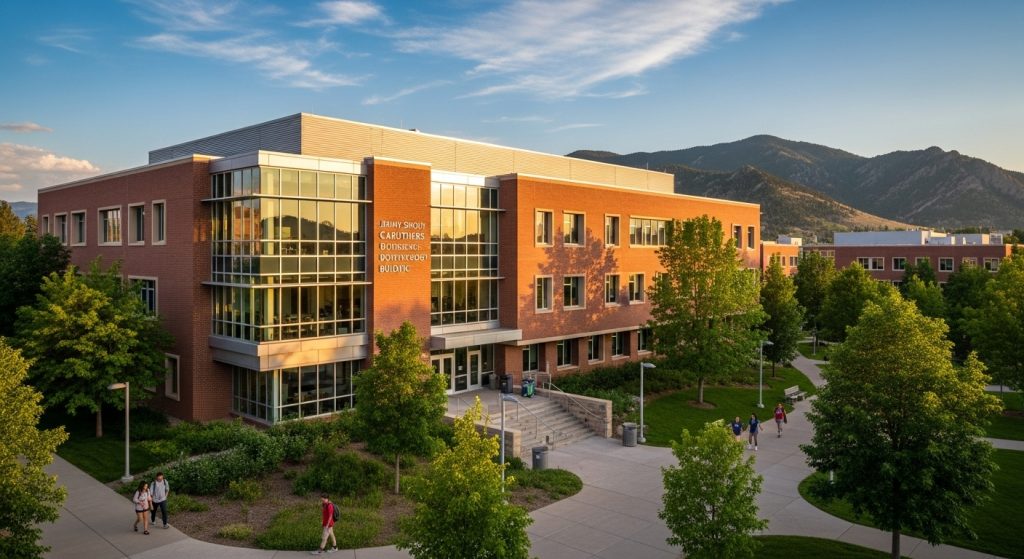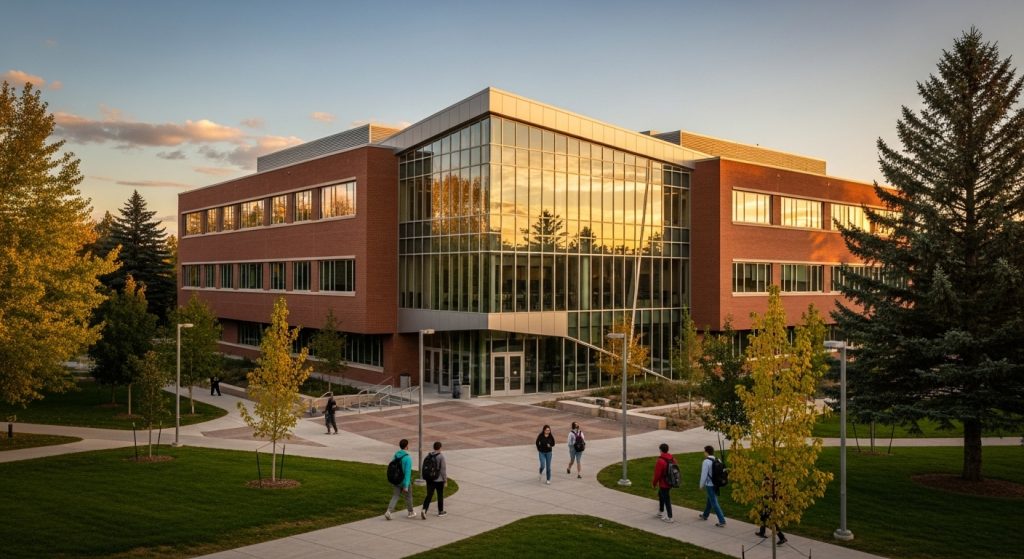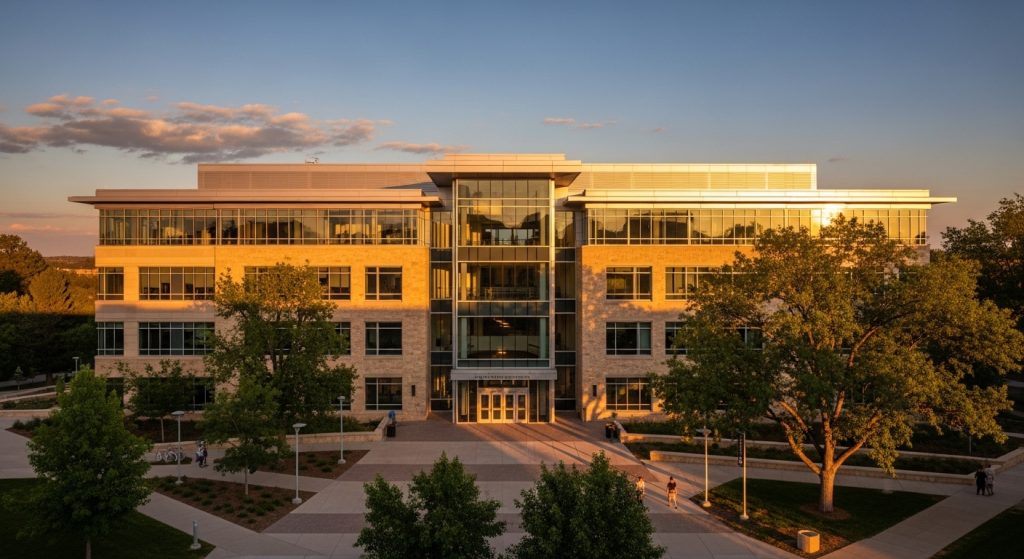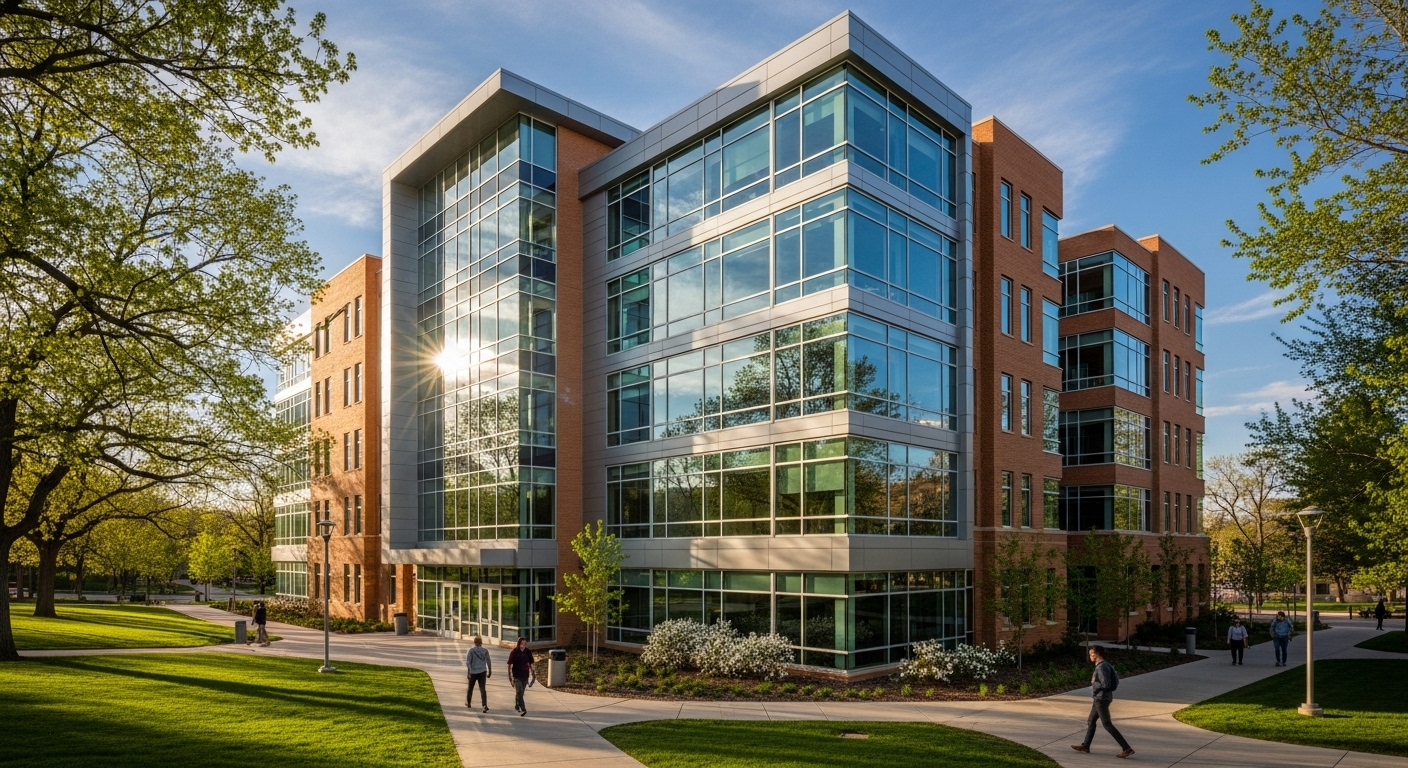Table of Contents
The Jennie Smoly Caruthers Biotechnology Building at the University of Colorado Boulder is a flagship center for scientific discovery and sustainable architecture. Opened in 2012, this award-winning facility combines cutting-edge biotechnology research with forward-thinking green design. More than just a laboratory, it is a collaborative hub where scientists, educators, and industry leaders come together to solve pressing global challenges.
Honoring Jennie Smoly Caruthers: A Legacy of Science and Innovation
The building is named after Jennie Smoly Caruthers, a respected biochemist and patent attorney who passed away in 2006. Her husband, Marvin Caruthers a renowned CU Boulder professor and pioneer in DNA synthesis—helped dedicate the facility in her honor. By carrying her name, the building symbolizes not only progress in biotechnology but also the enduring impact of Jennie’s contributions to science and innovation.
A Monument to Discovery and Education

Spanning more than 400,000 square feet on CU Boulder’s East Campus, the jennie smoly caruthers biotechnology building is home to over 60 faculty members and 500 researchers.
It also houses the prestigious BioFrontiers Institute, directed by Nobel Laureate Tom Cech. Together, these researchers work at the intersection of biology, chemistry, engineering, and data science to advance human health, develop sustainable energy, and unlock the mysteries of life at the molecular level.
Key statistics highlight the building’s impact:
- 400,000 sq. ft. of research and education space
- Over 500 active researchers working across disciplines
- 60+ faculty members driving biotech innovation
- LEED Platinum certification for sustainable design
Designed for Collaboration
One of the most distinctive aspects of the building is its “research neighborhood” design. Rather than isolating labs by department, the layout intentionally clusters scientists from diverse fields in shared spaces. This design encourages cross-disciplinary collaboration—a crucial factor for breakthroughs in biotechnology.
Key Features of the Layout
- Main Street Corridor: A central pathway that connects different wings and encourages informal meetings.
- Flexible Labs: Modular spaces can be reconfigured to accommodate new equipment, research needs, or emerging technologies.
- Shared Spaces: Cafés, atriums, and open lounges foster daily interaction among students, staff, and faculty.
This innovative design philosophy has transformed how CU Boulder researchers work, sparking new partnerships and accelerating discoveries.
Cutting-Edge Research in Action
Inside the Jennie Smoly Caruthers Biotechnology Building, scientists tackle some of society’s greatest challenges. Their research spans everything from cancer treatments to sustainable biofuels, with projects that bridge academic exploration and real-world application.
Highlighted Research Projects
- Genetic Research: BioFrontiers teams use CRISPR and advanced gene-editing techniques to study the genetic basis of disease.
- Algae-Based Biofuels: Researchers are engineering algae strains that can efficiently produce renewable fuel.
- Drug Discovery: High-throughput biochemical screening systems accelerate the search for new therapies.
- Synthetic Biology: Teams develop tools to engineer microorganisms for medicine, agriculture, and energy.
These projects not only generate new knowledge but also attract biotech companies to Colorado, strengthening the state’s innovation economy.
Award-Winning Sustainable Design

While laboratories are traditionally energy-intensive, the jennie smoly caruthers biotechnology building has set a new standard for sustainable research facilities. In 2013, it earned LEED Platinum certification, the highest rating for environmentally friendly buildings.
Sustainability Highlights
- Local Materials: More than 975,000 bricks and 10,000 limestone pieces sourced within 500 miles reduce transportation emissions.
- Energy Efficiency: Advanced heat recovery and ventilation systems reduce energy use by up to 30% compared to standard labs.
- Daylighting Strategies: Large windows and skylights maximize natural light, reducing reliance on artificial lighting.
- Water Conservation: Rainwater harvesting and native landscaping reduce water consumption.
- Green Landscaping: Boulder Creek Path integration promotes a natural, eco-friendly environment.
By blending high-tech science with eco-conscious architecture, the building demonstrates that sustainability and innovation can go hand in hand.
Educational Opportunities
Beyond its role as a research hub, the building supports CU Boulder’s mission of education and public engagement. Lecture halls, seminar rooms, and flexible classrooms ensure that students have access to modern, interactive learning environments.
Notable Spaces
- Butcher Auditorium: Seats 200, perfect for conferences and large lectures.
- Smaller Auditoriums (e.g., Room A104): Ideal for mid-sized classes and workshops.
- Flexible Classrooms (e.g., Room E1B11): Designed to adapt to interactive teaching methods.
These facilities enable the next generation of scientists to learn alongside world-leading researchers, creating a seamless connection between teaching and discovery.
Community and Collaboration
The Jennie Smoly Caruthers Biotechnology Building is not just a workplace—it’s also a community hub. With a café, art gallery, and multiple conference spaces, it provides an environment where creativity and collaboration flourish.
- Gallery Space: Hosts exhibitions and receptions, blending science with art.
- Café: A casual space where researchers, students, and visitors connect.
- Conference Rooms: Support local and global collaboration through advanced teleconferencing.
Events like student art showcases and science-meets-community initiatives reinforce CU Boulder’s mission of outreach and inclusivity.
Economic and Industry Impact
The impact of the jennie smoly caruthers biotechnology building extends well beyond academia.
- Construction Jobs: More than 600 jobs were created during its building phase.
- Ongoing Economic Activity: Colorado’s biotech industry generates more than $400 million annually in state tax revenue.
- Industry Partnerships: Startups and established biotech firms partner with CU researchers for pilot studies and testing.
This synergy between academia and industry positions Boulder as a leader in biotechnology innovation on both a national and global scale.
Expansion for the Future

In 2018, CU Boulder added a fifth wing (E-Wing) to the biotechnology building, increasing its research capacity and expanding space for new technologies. This addition reflects the growing demand for interdisciplinary science and ensures that the building continues to meet evolving needs in biotechnology and sustainable design.
Visiting the Jennie Smoly Caruthers Biotechnology Building
The building is located at 3415 Colorado Avenue, Boulder, CO, easily accessible by bus, bike, or car.
Visitor Information
- By Bus: RTD’s Stampede line provides free rides for EcoPass holders.
- By Bike: Covered racks and proximity to the Boulder Creek Path make cycling convenient.
- By Car: Pay-to-park and vendor parking are available on-site.
While access to laboratories is limited, visitors can explore its architecture, community spaces, and surrounding campus.
Final Thoughts
The Jennie Smoly Caruthers Biotechnology Building is more than a research facility. It is a living symbol of CU Boulder’s commitment to innovation, sustainability, and collaboration. By blending advanced biotechnology research with eco-friendly design, the building serves as both a hub for scientific discovery and a model for future research facilities worldwide.
Whether you’re a student, scientist, or visitor, this landmark represents the exciting intersection of science, architecture, and community an enduring tribute to Jennie Smoly Caruthers and the bright future of biotechnology.
FAQs
Is the Jennie Smoly Caruthers Biotechnology Building open to the public?
General visitors may access public spaces like the café, gallery, and auditoriums during events, but research labs require special clearance.
Why is the building named after Jennie Smoly Caruthers?
It honors Jennie’s legacy as a biochemist and patent attorney, as well as her husband Marvin Caruthers’ contributions to biotechnology at CU Boulder.
What makes the building sustainable?
Its LEED Platinum certification, energy-saving HVAC systems, daylighting strategies, and use of local materials make it one of the greenest research labs in the nation.

